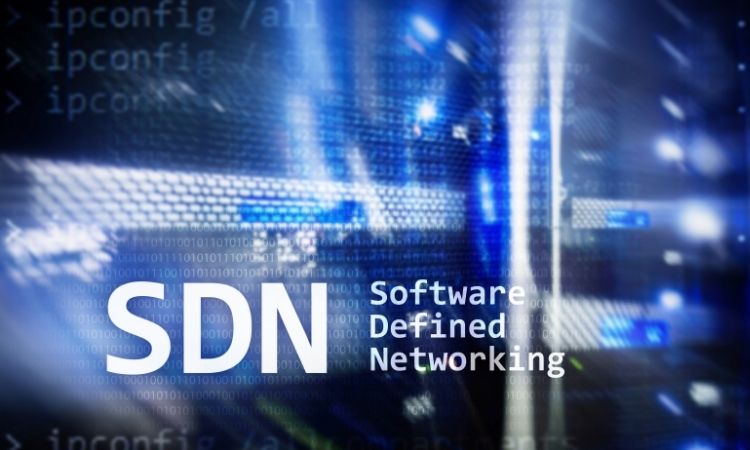The traditional network architecture, built around static hardware, has long been seen as rigid, slow, and expensive to manage. Enter Software-Defined Networking (SDN) — a revolutionary approach that decouples the control plane from the data plane, giving organizations unprecedented flexibility and control over how their networks behave.
SDN transforms networking by centralizing control into a software-based controller. Instead of configuring individual routers and switches manually, SDN allows you to manage the entire network from a single point of control. This shift is not just technical — it’s philosophical. It redefines the way we think about building, maintaining, and scaling modern digital infrastructures.
Expert Market Research Insight: Innovation in Motion
According to Expert Market Research, Software-Defined Networking is not just a fleeting trend — it’s a foundational shift in how networks are built and operated. EMR emphasizes that as digital transformation accelerates globally, organizations are increasingly seeking solutions that are scalable, secure, and adaptive — and SDN fits that demand perfectly.
Their insights highlight that the adoption of cloud services, IoT, and edge computing is fueling the need for programmable networks. Expert Market Research points out that SDN’s ability to enable granular control, reduce latency, and streamline network operations is positioning it as a cornerstone of modern digital ecosystems.
SDN: The Power to Evolve, Adapt, and Respond
One of the most powerful features of SDN is its programmability. Administrators can now dynamically adjust traffic flows, prioritize bandwidth, and implement security policies — all through code. This agility means networks can evolve in real time, adapting to new demands, threats, and workloads without major overhauls.
Think of SDN as giving your network a brain — one that can make informed decisions, automate repetitive tasks, and align perfectly with the needs of your applications, users, and services. It moves networks from reactive to proactive — and that’s a game-changer.
The Beauty of Centralized Control
In traditional networks, each device acts somewhat independently, creating bottlenecks in efficiency and making management incredibly complex. SDN flips this model by centralizing decision-making into a software controller that has a global view of the entire network.
This centralized architecture allows for smarter traffic engineering, faster troubleshooting, and enhanced network optimization. It’s no longer about isolated devices but about orchestrated systems that respond holistically. Whether scaling a data center, securing cloud infrastructure, or supporting remote teams, SDN makes it all feel seamless.
Where Performance Meets Simplicity
As the backbone of modern business operations, networks must be both high-performing and easy to manage. That’s where SDN truly shines. It simplifies complex network tasks like provisioning, load balancing, and network segmentation. Through automation and intuitive interfaces, SDN reduces human error, cuts down time, and boosts overall reliability.
With SDN, network administrators aren’t just technicians — they become architects of agile systems that can be tailored with surgical precision. This simplification doesn’t just benefit IT teams — it also enhances the end-user experience with faster, smoother, and more consistent connectivity.
SDN and Security: Built-In, Not Bolted On
Security has always been a challenge in sprawling, hardware-centric networks. SDN changes the game by integrating security at the network control level. Administrators can deploy security policies, isolate threats, and respond to incidents in real time — all from a centralized dashboard.
With SDN, segmentation is no longer a complicated process involving multiple firewalls and VLANs. Instead, policies can be programmed to define who can access what, when, and how — bringing Zero Trust security principles into practical implementation. It’s smarter, faster, and far more secure.
Cloud-Native Friendliness: The SDN Advantage
The rise of cloud-native architectures and multi-cloud environments has put new pressure on traditional networks. Applications now span containers, virtual machines, and geographically distributed resources. SDN offers the ideal solution, allowing seamless integration and dynamic connectivity across diverse environments.
Whether managing traffic between AWS, Azure, and on-premise infrastructure, or enabling microservices to talk efficiently, SDN provides the intelligent layer that ties everything together. It supports rapid deployments, real-time monitoring, and smart scaling — crucial for any enterprise operating in today’s cloud-driven world.
From Data Centers to Edge Devices: The Versatility of SDN
Software-Defined Networking isn’t confined to big data centers or tech giants. Its principles are now being extended to the edge of the network — powering IoT devices, remote branches, smart cities, and even autonomous vehicles.
By enabling intelligent data routing, real-time decision-making, and robust connectivity in remote or resource-constrained environments, SDN is becoming the connective tissue of modern life. Its ability to scale from core to edge makes it one of the most versatile technologies in the digital world.
The Human Side of SDN: Empowering People and Ideas
At its heart, SDN isn’t just about software — it’s about empowering people. It allows IT professionals to spend less time configuring routers and more time solving meaningful problems. It enables businesses to respond faster to customer needs. It gives developers the tools to innovate without waiting on infrastructure changes.
SDN democratizes networking by making it programmable, visible, and manageable in ways that were unimaginable just a few years ago. It’s a toolkit for a more responsive, more intelligent digital world.
 :
https://in.pinterest.com/anna743453/
:
https://in.pinterest.com/anna743453/

